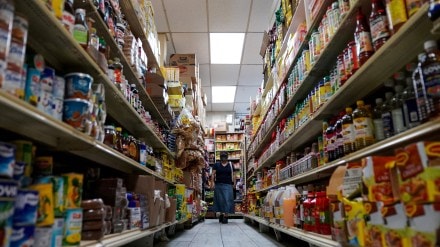The domestic fast-moving consumer goods (FMCG) business has struggled with volume growth for decades, according to Boston Consulting Group (BCG) in its latest study of the industry spanning over 15 years.
Released at the CII FMCG Summit on Monday, the study paints a grim picture of the market, saying that industry volume growth has been 3.4% only between 2007 and 2023, even as overall household consumption expenditure has grown 6.1% in the same period.
The study revealed that FMCG consumption has been hit by competing categories such as leisure, entertainment, travel, eating out, expenditure on durables and telecom which has taken away the share of wallets at the middle and upper ends of the market. Price of packaged household staples, home care products as well as packaged foods and beverages have more than doubled since 2012 contributing to the pressure on volume growth.
In addition, affluent households (earning an income of over Rs 10 lakh per annum) that account for 16% of all households in India spend 32% on FMCG products. The same household class accounts for 90% of spending on leisure and cars, BCG said.
However, disruptions like the demonetisation of 2016 and the subsequent Goods and Services Tax (GST) as well as the Covid-19 epidemic in 2020–2022 have negatively impacted consumption at the lower end of the market, mainly in rural and semi-urban India.
Further, the study stated that it hasn’t helped that inflationary pressures and weather uncertainty have continued to hurt rural consumption, though industry volume growth can touch 5-6% in the next decade as supply-side constraints improve and more consumers get into the consumption basket in the future.
“FMCG is about how many consumers you can reach and how you can help them transition from unbranded to branded consumption or help them trade up with a mix of product, price, packaging and promotion. As affluence grows and more consumers begin to get into the consumption net, industry volume growth can improve, provided that supply-side actions also grow,” said Abheek Singhi, MD and senior partner, chair of practices at BCG, Mumbai.
While the focus of FMCG companies has shifted recently to reviving general trade, which accounts for 80% of the industry, and expanding their direct distribution reach, Singhi said that focusing on category development and adopting a share of wallet perspective, or understanding what consumers click and doesn’t click, could help increase market volume growth rates.
K Ramakrishnan, MD, South Asia, Kantar WorldPanel, said that growing categories have a strong rural focus and that they also tend to be active in terms of innovations. “Brands in the growing categories are great responders to macro occurrences. They tailor-make perceptions around these trends,” Ramakrishnan said, citing the growth in hygiene and healthcare products during the Covid-19 pandemic.
Post-Covid, the “hygiene-aware” and “snacking intense” consumer has pushed up category contribution of segments such as noodles, biscuits and insecticides in overall volume change, Ramakrishnan added.
While packaged noodles have touched 78% in terms of contribution, biscuits and insecticides have touched 67% and 64% each in terms of contribution to volume change.
Shoppers are also looking for convenience in terms of saving time and ease of use, and are willing to pay more for products that provide it. For example, while washing machine penetration increased from 8% in 2014 to 22% now, demand for matic powders and liquid detergents used in washing machines increased to 26% and 35%, respectively, from a minuscule share a decade ago, Ramakrishnan said.
